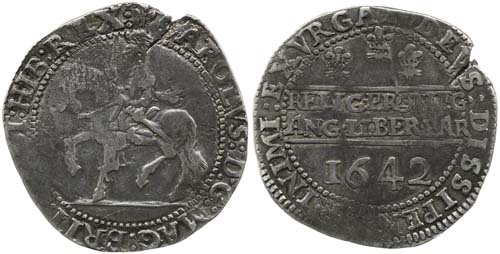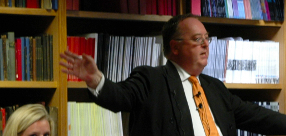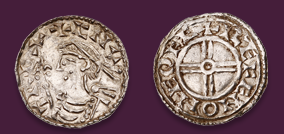
Auction: 5033 - The Colin Adams Collection of Halfcrowns
Lot: 171
Charles I, Oxford mint (1642-46), Halfcrown, 14.45g., 1642, Shrewsbury/Oxford mule, Shrewsbury horseman walking left, horse´s off foreleg raised, ground-line below, no plume behind, CAROLVS D G MAG BRIT FR ET HIB REX, rev. declaration RELIG.PROT.LEG ANG.LIBER.PAR in two lines, three Oxford plumes above, date below, EXVRGAT DEVS DISSIPENTVR INIMI, double pellet stops, single before INIMI, m.m. Shrewsbury plume on obverse only (JGB 878 (same dies); Morr. B-4; N.2409; S.2950) striking crack at 1 o´clock, flan slightly pitted by king´s sword, otherwise good fine, rare Estimate £ 500-600PROVENANCE: Glendining, 18 June 1975, lot 125 After the battle of Edgehill on 20 October 1642, Charles I proceeded to Oxford where he was loyally received. He did not stay long, but moved on towards London. Following the check at Brentford, the King was forced to retreat, and he returned to Oxford where he set up his headquarters, an arrangement that continued until his surrender to the Scots at Newark in May 1646. On 15 December the King issued a proclamation establishing a mint, and directed Thomas Bushell, the Warden of the Mint at Shrewsbury, to join him with his establishment. Bushell arrived on 3 January 1642/3 and started his mint in New Inn Hall. Included in the minting equipment brought from Shrewsbury were three Halfcrown dies, Shrewsbury obverse dies D and F (= Oxford B (cf. this coin)) and Shrewsbury reverse die 6 (= Oxford 1 (cf. lot 172 below)). Technically a ´true´ Shrewsbury Halfcrown could have been struck at Oxford but, quite possibly by design, Shrewsbury reverse die 6 is only known in conjunction with an Oxford obverse, BNJ XII p.204.
Sold for
£440




